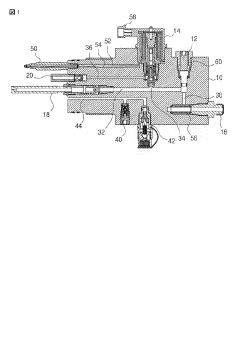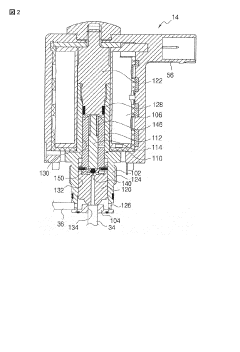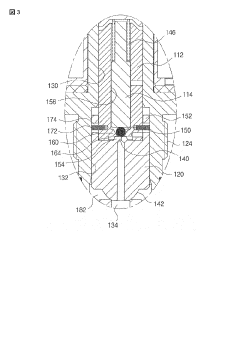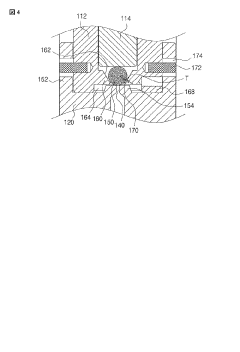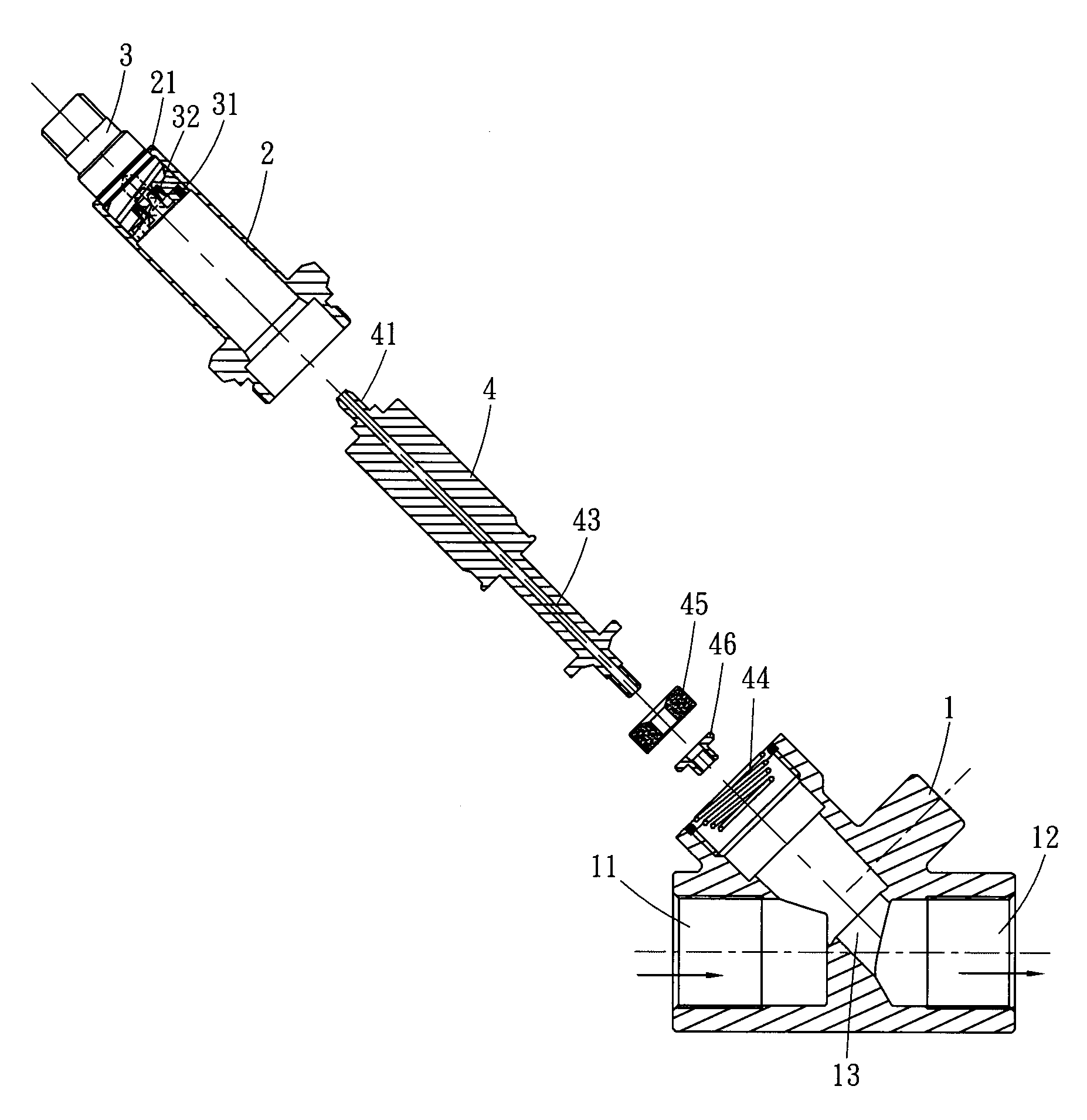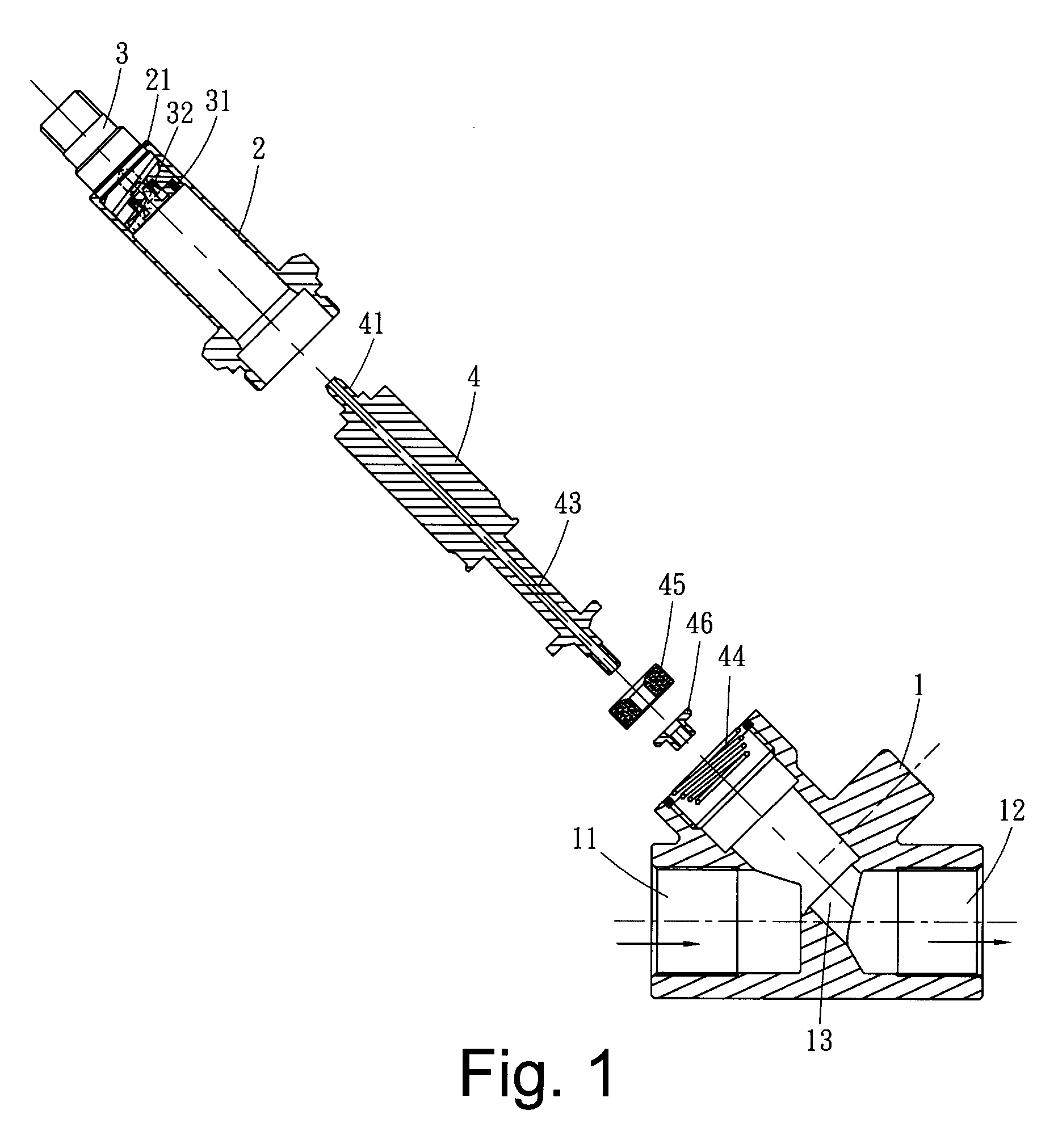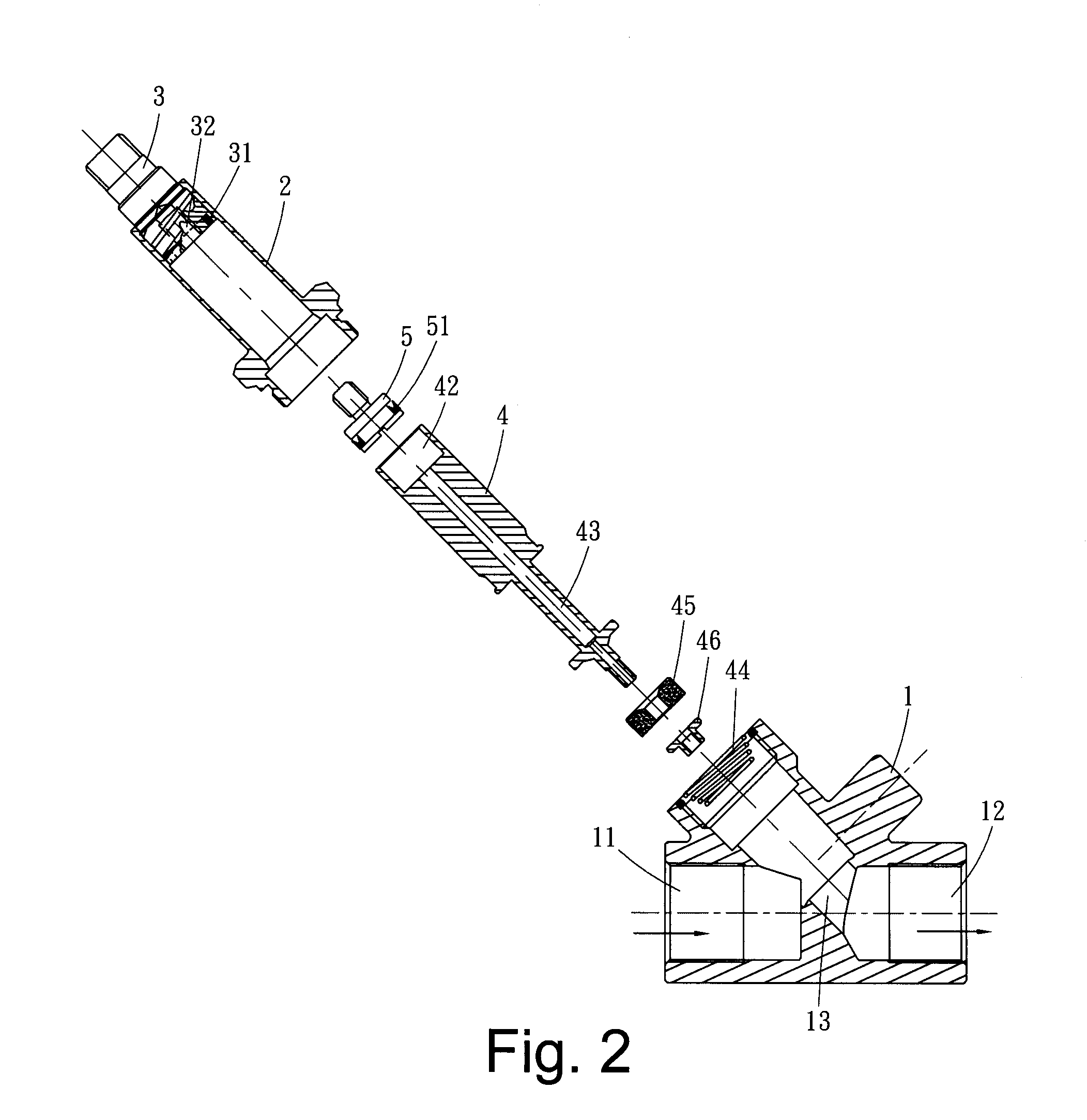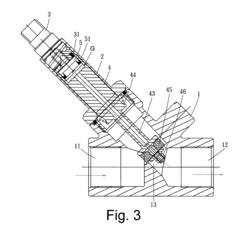Study on Solenoid Valve Pressure Dynamics in High-Risk Systems
JUL 23, 20259 MIN READ
Generate Your Research Report Instantly with AI Agent
Patsnap Eureka helps you evaluate technical feasibility & market potential.
Solenoid Valve Dynamics
Solenoid valves play a crucial role in high-risk systems, where precise control of fluid flow and pressure is paramount. These electromechanical devices convert electrical energy into mechanical motion, enabling rapid and accurate regulation of fluid dynamics. In high-risk applications, such as aerospace, nuclear power plants, and medical equipment, the performance of solenoid valves can significantly impact system safety and reliability.
The dynamics of solenoid valves in high-risk systems are characterized by complex interactions between electromagnetic forces, mechanical components, and fluid behavior. When energized, the solenoid coil generates a magnetic field that attracts a ferromagnetic plunger or armature. This movement either opens or closes the valve, depending on its configuration. The speed and force of this action are critical factors in determining the valve's response time and its ability to withstand high-pressure conditions.
Pressure dynamics within solenoid valves are particularly important in high-risk systems. As the valve opens or closes, rapid changes in fluid pressure can occur, potentially leading to pressure spikes, cavitation, or water hammer effects. These phenomena can cause damage to the valve itself or to other components in the system. Understanding and mitigating these pressure dynamics is essential for ensuring the longevity and reliability of the valve and the overall system.
The study of solenoid valve pressure dynamics involves analyzing various factors, including valve geometry, material properties, and operating conditions. Advanced computational fluid dynamics (CFD) simulations and experimental techniques are often employed to investigate the complex flow patterns and pressure distributions within the valve. These studies help in optimizing valve design to minimize pressure losses, reduce wear, and improve overall efficiency.
In high-risk systems, the response time of solenoid valves is a critical parameter. Rapid actuation is often required to respond to emergency situations or maintain precise control. However, faster actuation can lead to increased mechanical stress and more severe pressure transients. Balancing these competing requirements necessitates careful design considerations and advanced control strategies.
The reliability of solenoid valves in high-risk systems is paramount. Failure modes such as sticking, leakage, or incomplete closure can have severe consequences. Therefore, extensive testing and validation procedures are implemented to ensure valve performance under various operating conditions, including extreme temperatures, pressures, and vibration levels.
The dynamics of solenoid valves in high-risk systems are characterized by complex interactions between electromagnetic forces, mechanical components, and fluid behavior. When energized, the solenoid coil generates a magnetic field that attracts a ferromagnetic plunger or armature. This movement either opens or closes the valve, depending on its configuration. The speed and force of this action are critical factors in determining the valve's response time and its ability to withstand high-pressure conditions.
Pressure dynamics within solenoid valves are particularly important in high-risk systems. As the valve opens or closes, rapid changes in fluid pressure can occur, potentially leading to pressure spikes, cavitation, or water hammer effects. These phenomena can cause damage to the valve itself or to other components in the system. Understanding and mitigating these pressure dynamics is essential for ensuring the longevity and reliability of the valve and the overall system.
The study of solenoid valve pressure dynamics involves analyzing various factors, including valve geometry, material properties, and operating conditions. Advanced computational fluid dynamics (CFD) simulations and experimental techniques are often employed to investigate the complex flow patterns and pressure distributions within the valve. These studies help in optimizing valve design to minimize pressure losses, reduce wear, and improve overall efficiency.
In high-risk systems, the response time of solenoid valves is a critical parameter. Rapid actuation is often required to respond to emergency situations or maintain precise control. However, faster actuation can lead to increased mechanical stress and more severe pressure transients. Balancing these competing requirements necessitates careful design considerations and advanced control strategies.
The reliability of solenoid valves in high-risk systems is paramount. Failure modes such as sticking, leakage, or incomplete closure can have severe consequences. Therefore, extensive testing and validation procedures are implemented to ensure valve performance under various operating conditions, including extreme temperatures, pressures, and vibration levels.
High-Risk System Demands
High-risk systems, such as nuclear power plants, aerospace applications, and critical industrial processes, demand exceptional reliability and precision from their components, particularly solenoid valves. These systems operate under extreme conditions and require valves that can withstand high pressures, temperature fluctuations, and corrosive environments while maintaining consistent performance. The pressure dynamics of solenoid valves in such systems are crucial, as even minor deviations can lead to catastrophic failures.
In nuclear power plants, solenoid valves play a vital role in controlling coolant flow and emergency shutdown systems. The pressure dynamics must be precisely controlled to ensure reactor safety and prevent potential meltdowns. These valves must operate flawlessly under high radiation levels and maintain their integrity over extended periods without maintenance.
Aerospace applications, including aircraft and spacecraft, rely heavily on solenoid valves for fuel management, hydraulic systems, and life support. The pressure dynamics in these valves must remain stable despite rapid changes in altitude, temperature, and acceleration forces. Failure of a valve in a critical system could lead to loss of control or life-threatening situations for crew members.
In petrochemical and chemical processing industries, solenoid valves are used to control the flow of hazardous materials under high pressures. The pressure dynamics must be carefully managed to prevent leaks, explosions, or environmental contamination. These valves often operate in corrosive environments and must maintain their performance characteristics over time.
Medical devices, such as ventilators and anesthesia machines, also fall into the category of high-risk systems. Solenoid valves in these applications must provide precise control over gas flow rates and pressures to ensure patient safety. The pressure dynamics must be responsive yet stable to accommodate varying patient needs and emergency situations.
The demands on solenoid valves in high-risk systems extend beyond mere functionality. They must exhibit exceptional durability, with some applications requiring operational lifespans measured in decades. The valves must also demonstrate fail-safe characteristics, ensuring that in the event of power loss or system failure, they default to a safe position to prevent further damage or danger.
Furthermore, these high-risk applications often require solenoid valves to operate with minimal power consumption and heat generation. This is particularly critical in battery-powered or heat-sensitive environments where energy efficiency and thermal management are paramount. The pressure dynamics must be optimized to achieve rapid response times and precise control while minimizing energy use.
In nuclear power plants, solenoid valves play a vital role in controlling coolant flow and emergency shutdown systems. The pressure dynamics must be precisely controlled to ensure reactor safety and prevent potential meltdowns. These valves must operate flawlessly under high radiation levels and maintain their integrity over extended periods without maintenance.
Aerospace applications, including aircraft and spacecraft, rely heavily on solenoid valves for fuel management, hydraulic systems, and life support. The pressure dynamics in these valves must remain stable despite rapid changes in altitude, temperature, and acceleration forces. Failure of a valve in a critical system could lead to loss of control or life-threatening situations for crew members.
In petrochemical and chemical processing industries, solenoid valves are used to control the flow of hazardous materials under high pressures. The pressure dynamics must be carefully managed to prevent leaks, explosions, or environmental contamination. These valves often operate in corrosive environments and must maintain their performance characteristics over time.
Medical devices, such as ventilators and anesthesia machines, also fall into the category of high-risk systems. Solenoid valves in these applications must provide precise control over gas flow rates and pressures to ensure patient safety. The pressure dynamics must be responsive yet stable to accommodate varying patient needs and emergency situations.
The demands on solenoid valves in high-risk systems extend beyond mere functionality. They must exhibit exceptional durability, with some applications requiring operational lifespans measured in decades. The valves must also demonstrate fail-safe characteristics, ensuring that in the event of power loss or system failure, they default to a safe position to prevent further damage or danger.
Furthermore, these high-risk applications often require solenoid valves to operate with minimal power consumption and heat generation. This is particularly critical in battery-powered or heat-sensitive environments where energy efficiency and thermal management are paramount. The pressure dynamics must be optimized to achieve rapid response times and precise control while minimizing energy use.
Pressure Challenges
Solenoid valves in high-risk systems face significant pressure challenges that can impact their performance and reliability. One of the primary issues is the need to maintain precise pressure control across a wide range of operating conditions. These valves must respond rapidly to changes in system pressure while maintaining accuracy, which becomes increasingly difficult as pressure levels rise.
High-pressure environments pose a particular challenge for solenoid valves, as they must withstand extreme forces without compromising their sealing capabilities. The risk of leakage increases substantially under high-pressure conditions, potentially leading to system failures or safety hazards. Additionally, the materials used in valve construction must be carefully selected to withstand the stress and potential corrosion associated with high-pressure fluids.
Another critical pressure challenge is the phenomenon of pressure transients, also known as water hammer. These sudden pressure spikes can occur when valves are rapidly opened or closed, potentially causing damage to the valve itself or other system components. Managing these transients requires sophisticated control strategies and valve designs that can absorb or mitigate the impact of pressure waves.
The dynamic response of solenoid valves under varying pressure conditions is a complex issue that demands careful consideration. As system pressures fluctuate, the force required to actuate the valve changes, which can affect response times and overall system performance. Engineers must design valves that can maintain consistent operation across a broad pressure range, often necessitating advanced control algorithms and adaptive mechanisms.
Pressure differential across the valve is another significant challenge, particularly in systems with large pressure gradients. Valves must be capable of opening and closing reliably against high differential pressures without excessive wear or the risk of malfunction. This requires robust designs and materials that can withstand the stress of repeated cycling under demanding conditions.
In high-risk systems, the potential for rapid depressurization or overpressure events must also be addressed. Solenoid valves may need to incorporate safety features such as pressure relief mechanisms or fail-safe designs to prevent catastrophic failures in the event of system malfunctions. These safety considerations often add complexity to valve design and control systems.
Furthermore, the interaction between fluid dynamics and valve operation presents ongoing challenges. Cavitation, erosion, and flow-induced vibration can all occur under certain pressure conditions, potentially leading to premature valve failure or reduced performance over time. Mitigating these effects requires a deep understanding of fluid behavior and innovative valve designs that can maintain stability across diverse operating regimes.
High-pressure environments pose a particular challenge for solenoid valves, as they must withstand extreme forces without compromising their sealing capabilities. The risk of leakage increases substantially under high-pressure conditions, potentially leading to system failures or safety hazards. Additionally, the materials used in valve construction must be carefully selected to withstand the stress and potential corrosion associated with high-pressure fluids.
Another critical pressure challenge is the phenomenon of pressure transients, also known as water hammer. These sudden pressure spikes can occur when valves are rapidly opened or closed, potentially causing damage to the valve itself or other system components. Managing these transients requires sophisticated control strategies and valve designs that can absorb or mitigate the impact of pressure waves.
The dynamic response of solenoid valves under varying pressure conditions is a complex issue that demands careful consideration. As system pressures fluctuate, the force required to actuate the valve changes, which can affect response times and overall system performance. Engineers must design valves that can maintain consistent operation across a broad pressure range, often necessitating advanced control algorithms and adaptive mechanisms.
Pressure differential across the valve is another significant challenge, particularly in systems with large pressure gradients. Valves must be capable of opening and closing reliably against high differential pressures without excessive wear or the risk of malfunction. This requires robust designs and materials that can withstand the stress of repeated cycling under demanding conditions.
In high-risk systems, the potential for rapid depressurization or overpressure events must also be addressed. Solenoid valves may need to incorporate safety features such as pressure relief mechanisms or fail-safe designs to prevent catastrophic failures in the event of system malfunctions. These safety considerations often add complexity to valve design and control systems.
Furthermore, the interaction between fluid dynamics and valve operation presents ongoing challenges. Cavitation, erosion, and flow-induced vibration can all occur under certain pressure conditions, potentially leading to premature valve failure or reduced performance over time. Mitigating these effects requires a deep understanding of fluid behavior and innovative valve designs that can maintain stability across diverse operating regimes.
Current Solutions
01 Pressure control mechanisms in solenoid valves
Solenoid valves employ various pressure control mechanisms to regulate fluid flow and maintain desired pressure levels. These mechanisms may include pressure-responsive elements, feedback systems, and adaptive control algorithms to ensure precise and stable pressure dynamics within the valve system.- Pressure control mechanisms in solenoid valves: Solenoid valves employ various pressure control mechanisms to regulate fluid flow and maintain desired pressure levels. These mechanisms may include pressure-responsive elements, feedback systems, and adaptive control algorithms to ensure precise and stable pressure dynamics within the valve system.
- Dynamic response characteristics of solenoid valves: The dynamic response of solenoid valves is crucial for their performance in various applications. This includes factors such as response time, hysteresis, and pressure fluctuations during valve operation. Optimizing these characteristics can lead to improved valve efficiency and reliability in pressure-sensitive systems.
- Pressure compensation techniques in solenoid valves: Pressure compensation techniques are employed in solenoid valves to maintain consistent performance across varying pressure conditions. These may include pressure-balancing mechanisms, adaptive control systems, and specialized valve designs that minimize the effects of pressure fluctuations on valve operation.
- Integration of pressure sensors in solenoid valve systems: Incorporating pressure sensors into solenoid valve systems allows for real-time monitoring and adjustment of pressure dynamics. This integration enables more precise control, fault detection, and predictive maintenance capabilities, enhancing overall system performance and reliability.
- Advanced control algorithms for solenoid valve pressure management: Advanced control algorithms are developed to optimize pressure management in solenoid valve systems. These algorithms may utilize machine learning, adaptive control, and predictive modeling techniques to enhance valve response, minimize pressure fluctuations, and improve overall system efficiency.
02 Dynamic response and pressure balancing
Solenoid valves are designed to provide rapid and accurate responses to pressure changes. This involves implementing pressure balancing techniques, optimizing valve geometry, and utilizing advanced materials to minimize response times and enhance overall system stability during pressure fluctuations.Expand Specific Solutions03 Integration of pressure sensors and feedback systems
Modern solenoid valve designs incorporate pressure sensors and feedback systems to continuously monitor and adjust valve operation. These systems enable real-time pressure measurement and control, allowing for adaptive responses to changing pressure conditions and improved overall performance.Expand Specific Solutions04 Pressure-based actuation and modulation techniques
Solenoid valves utilize various pressure-based actuation and modulation techniques to achieve precise control over fluid flow. These may include proportional control, pulse-width modulation, and multi-stage actuation systems, allowing for fine-tuned pressure regulation across a wide range of operating conditions.Expand Specific Solutions05 Pressure compensation and damping mechanisms
To maintain stable pressure dynamics, solenoid valves incorporate pressure compensation and damping mechanisms. These features help mitigate pressure spikes, reduce oscillations, and ensure smooth operation under varying pressure conditions, enhancing overall system reliability and performance.Expand Specific Solutions
Key Industry Players
The study on solenoid valve pressure dynamics in high-risk systems is in a mature stage of development, with a significant market size due to its critical applications in various industries. The technology has reached a high level of maturity, as evidenced by the involvement of established players like Robert Bosch GmbH, BorgWarner, Inc., and Parker-Hannifin Corp. These companies, along with others such as Eaton Corp. and Siemens, have contributed to advancing the field through continuous research and development. The competitive landscape is characterized by a mix of large multinational corporations and specialized valve manufacturers, indicating a diverse and robust market with opportunities for both innovation and standardization.
Robert Bosch GmbH
Technical Solution: Robert Bosch GmbH has developed advanced solenoid valve technology for high-risk systems, focusing on pressure dynamics optimization. Their approach involves integrating smart sensors and adaptive control algorithms to enhance valve response time and precision. The company has implemented a novel magnetic circuit design that reduces hysteresis and improves linearity in valve operation[1]. Bosch's solenoid valves utilize high-performance materials and coatings to withstand extreme pressure and temperature conditions, ensuring reliability in critical applications. Additionally, they have incorporated predictive maintenance capabilities through IoT connectivity, allowing real-time monitoring of valve performance and early detection of potential failures[3].
Strengths: Industry-leading R&D capabilities, extensive experience in automotive and industrial applications, and a strong focus on safety-critical systems. Weaknesses: Higher cost compared to standard solutions, and potential over-engineering for less demanding applications.
Parker-Hannifin Corp.
Technical Solution: Parker-Hannifin Corp. has developed a comprehensive approach to solenoid valve pressure dynamics in high-risk systems. Their solution incorporates advanced materials science, precision manufacturing techniques, and intelligent control systems. Parker's solenoid valves feature a proprietary alloy composition that maintains structural integrity under extreme pressure and temperature conditions[2]. The company has also implemented a multi-stage pressure balancing mechanism that ensures consistent performance across a wide range of operating conditions. Parker's valves utilize a high-speed electronic driver system that enables precise control of valve opening and closing times, critical for managing pressure transients in high-risk applications[4]. Furthermore, they have integrated advanced diagnostics and prognostics capabilities, allowing for real-time health monitoring and predictive maintenance of valve systems.
Strengths: Extensive product range covering diverse applications, strong focus on customization for specific industry needs, and global support network. Weaknesses: Complexity of some solutions may require specialized training for maintenance personnel.
Core Innovations
Solenoid valve for high pressure vessels
PatentActiveJP2024510492A
Innovation
- A solenoid valve design featuring a ball member that rolls to seal the orifice, utilizing a non-metallic upper plunger, lower plunger, and actuating rod made of materials like PEEK or PAI, which prevent deformation under high pressure, ensuring airtightness even at low pressures.
High-pressure armature set of solenoid valve
PatentInactiveUS20110248198A1
Innovation
- The high-pressure armature set features a plunger with an extended portion and axial through hole, allowing it to be adapted for pressures up to 70 Bar without increasing the solenoid valve body size, utilizing a soft magnet balance seat and degaussing rod to enhance magnetic attraction and balance fluid pressure, thereby reducing power consumption and improving control accuracy.
Safety Regulations
Safety regulations play a crucial role in the study of solenoid valve pressure dynamics in high-risk systems. These regulations are designed to ensure the safe operation of systems that utilize solenoid valves, particularly in environments where pressure fluctuations can pose significant risks to personnel, equipment, and the environment.
In the context of high-risk systems, regulatory bodies have established stringent guidelines for the design, installation, and operation of solenoid valves. These regulations typically cover aspects such as pressure ratings, material compatibility, fail-safe mechanisms, and testing procedures. For instance, the American Society of Mechanical Engineers (ASME) provides specific codes for pressure vessels and piping systems, which include requirements for solenoid valves used in these applications.
One key aspect of safety regulations is the requirement for regular inspection and maintenance of solenoid valves. This includes periodic testing of valve functionality, pressure integrity, and response times. In high-risk systems, such as those found in nuclear power plants or chemical processing facilities, these inspections are often mandated by law and must be conducted by certified professionals.
Safety regulations also address the need for redundancy in critical systems. This may involve the installation of backup solenoid valves or alternative pressure control mechanisms to ensure system integrity in case of primary valve failure. Furthermore, regulations often specify the need for real-time monitoring systems that can detect anomalies in valve performance or pressure dynamics, allowing for rapid response to potential safety issues.
The classification of high-risk systems often determines the specific safety regulations that apply to solenoid valve pressure dynamics. For example, in the oil and gas industry, regulations such as those set by the American Petroleum Institute (API) provide detailed guidelines for the use of solenoid valves in wellhead control systems and other critical applications. These regulations take into account the unique challenges posed by high-pressure environments and potentially explosive atmospheres.
In addition to industry-specific regulations, international standards such as IEC 61508 for functional safety of electrical/electronic/programmable electronic safety-related systems provide a framework for assessing and mitigating risks associated with solenoid valve operations. These standards emphasize the importance of a systematic approach to safety, including risk assessment, design considerations, and lifecycle management of safety-critical components.
Compliance with safety regulations often requires manufacturers and operators to provide extensive documentation on solenoid valve performance, including pressure-time curves, response characteristics, and failure mode analyses. This documentation serves as a critical resource for system designers, maintenance personnel, and regulatory inspectors in ensuring the ongoing safety and reliability of high-risk systems.
In the context of high-risk systems, regulatory bodies have established stringent guidelines for the design, installation, and operation of solenoid valves. These regulations typically cover aspects such as pressure ratings, material compatibility, fail-safe mechanisms, and testing procedures. For instance, the American Society of Mechanical Engineers (ASME) provides specific codes for pressure vessels and piping systems, which include requirements for solenoid valves used in these applications.
One key aspect of safety regulations is the requirement for regular inspection and maintenance of solenoid valves. This includes periodic testing of valve functionality, pressure integrity, and response times. In high-risk systems, such as those found in nuclear power plants or chemical processing facilities, these inspections are often mandated by law and must be conducted by certified professionals.
Safety regulations also address the need for redundancy in critical systems. This may involve the installation of backup solenoid valves or alternative pressure control mechanisms to ensure system integrity in case of primary valve failure. Furthermore, regulations often specify the need for real-time monitoring systems that can detect anomalies in valve performance or pressure dynamics, allowing for rapid response to potential safety issues.
The classification of high-risk systems often determines the specific safety regulations that apply to solenoid valve pressure dynamics. For example, in the oil and gas industry, regulations such as those set by the American Petroleum Institute (API) provide detailed guidelines for the use of solenoid valves in wellhead control systems and other critical applications. These regulations take into account the unique challenges posed by high-pressure environments and potentially explosive atmospheres.
In addition to industry-specific regulations, international standards such as IEC 61508 for functional safety of electrical/electronic/programmable electronic safety-related systems provide a framework for assessing and mitigating risks associated with solenoid valve operations. These standards emphasize the importance of a systematic approach to safety, including risk assessment, design considerations, and lifecycle management of safety-critical components.
Compliance with safety regulations often requires manufacturers and operators to provide extensive documentation on solenoid valve performance, including pressure-time curves, response characteristics, and failure mode analyses. This documentation serves as a critical resource for system designers, maintenance personnel, and regulatory inspectors in ensuring the ongoing safety and reliability of high-risk systems.
Failure Mode Analysis
Failure mode analysis is a critical component in the study of solenoid valve pressure dynamics in high-risk systems. This analysis involves a systematic approach to identifying potential failure mechanisms, their causes, and their effects on system performance and safety. In the context of solenoid valves, failure modes can be categorized into mechanical, electrical, and environmental factors.
Mechanical failure modes include wear and tear of valve components, such as seals, springs, and plungers. Over time, these components may degrade due to repeated cycling, leading to leakage, sticking, or incomplete closure. Material fatigue and stress corrosion cracking are also significant concerns, particularly in high-pressure environments. These failures can result in reduced valve responsiveness or complete malfunction, potentially compromising system integrity.
Electrical failure modes encompass issues related to the solenoid coil and its control circuitry. Short circuits, open circuits, and insulation breakdown can lead to valve actuation failures or unintended operations. Electromagnetic interference and power supply fluctuations may also contribute to erratic valve behavior. In high-risk systems, such electrical failures can have severe consequences, including system shutdowns or uncontrolled pressure releases.
Environmental factors play a crucial role in failure mode analysis. Extreme temperatures, corrosive media, and particulate contamination can accelerate component degradation and introduce additional failure mechanisms. For instance, thermal cycling may cause material expansion and contraction, leading to seal failures or misalignments. Corrosive environments can attack valve materials, compromising their structural integrity and functional properties.
Pressure-related failure modes are particularly relevant in high-risk systems. Overpressure events can cause catastrophic failures, including valve rupture or seat damage. Conversely, underpressure scenarios may result in inadequate sealing or valve chatter. Pressure transients and water hammer effects can induce fatigue failures or damage internal components, potentially leading to sudden and unpredictable valve malfunctions.
To conduct a comprehensive failure mode analysis, techniques such as Failure Mode and Effects Analysis (FMEA) and Fault Tree Analysis (FTA) are commonly employed. These methodologies help in quantifying the likelihood and severity of various failure modes, enabling prioritization of mitigation strategies. Additionally, accelerated life testing and stress testing can provide valuable insights into long-term reliability and performance under extreme conditions.
Understanding the interplay between different failure modes is crucial for developing robust solenoid valve designs for high-risk systems. This analysis informs material selection, component design, and system architecture decisions. It also guides the development of predictive maintenance strategies and condition monitoring techniques to enhance overall system reliability and safety.
Mechanical failure modes include wear and tear of valve components, such as seals, springs, and plungers. Over time, these components may degrade due to repeated cycling, leading to leakage, sticking, or incomplete closure. Material fatigue and stress corrosion cracking are also significant concerns, particularly in high-pressure environments. These failures can result in reduced valve responsiveness or complete malfunction, potentially compromising system integrity.
Electrical failure modes encompass issues related to the solenoid coil and its control circuitry. Short circuits, open circuits, and insulation breakdown can lead to valve actuation failures or unintended operations. Electromagnetic interference and power supply fluctuations may also contribute to erratic valve behavior. In high-risk systems, such electrical failures can have severe consequences, including system shutdowns or uncontrolled pressure releases.
Environmental factors play a crucial role in failure mode analysis. Extreme temperatures, corrosive media, and particulate contamination can accelerate component degradation and introduce additional failure mechanisms. For instance, thermal cycling may cause material expansion and contraction, leading to seal failures or misalignments. Corrosive environments can attack valve materials, compromising their structural integrity and functional properties.
Pressure-related failure modes are particularly relevant in high-risk systems. Overpressure events can cause catastrophic failures, including valve rupture or seat damage. Conversely, underpressure scenarios may result in inadequate sealing or valve chatter. Pressure transients and water hammer effects can induce fatigue failures or damage internal components, potentially leading to sudden and unpredictable valve malfunctions.
To conduct a comprehensive failure mode analysis, techniques such as Failure Mode and Effects Analysis (FMEA) and Fault Tree Analysis (FTA) are commonly employed. These methodologies help in quantifying the likelihood and severity of various failure modes, enabling prioritization of mitigation strategies. Additionally, accelerated life testing and stress testing can provide valuable insights into long-term reliability and performance under extreme conditions.
Understanding the interplay between different failure modes is crucial for developing robust solenoid valve designs for high-risk systems. This analysis informs material selection, component design, and system architecture decisions. It also guides the development of predictive maintenance strategies and condition monitoring techniques to enhance overall system reliability and safety.
Unlock deeper insights with Patsnap Eureka Quick Research — get a full tech report to explore trends and direct your research. Try now!
Generate Your Research Report Instantly with AI Agent
Supercharge your innovation with Patsnap Eureka AI Agent Platform!
